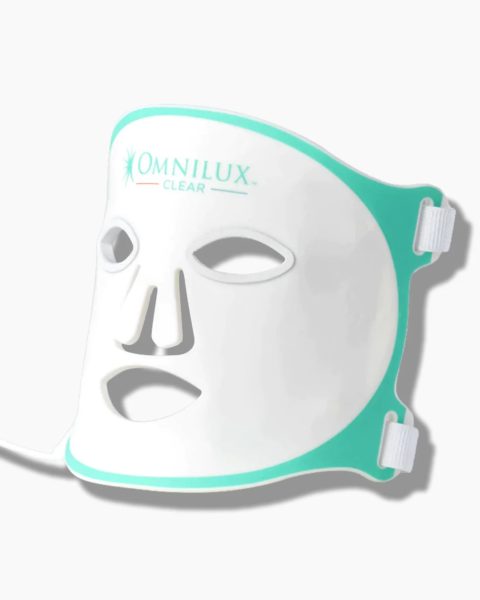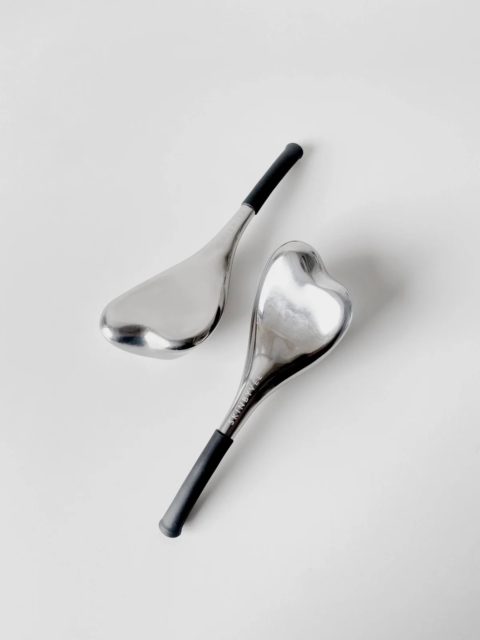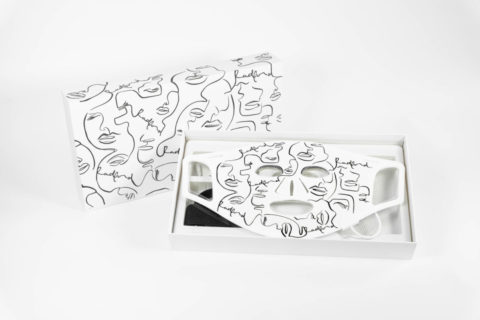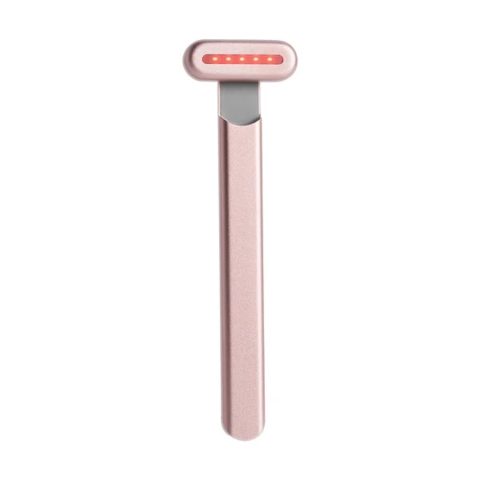This article was originally published on January 17, 2023 and has been updated.
Oh, the bliss of at-home skincare rituals. To our beloved sheet masks, under eye patches and facial rollers: You’ve been a delight, but this year we’re due for an upgrade. Do-it-yourself skincare devices are calling and we must answer for the betterment of our self-care regimens — and faces.
Though we still love getting facials, the evolution of at-home skincare technology — think LED masks and microcurrent devices — is showing no sign of slowing down. These at-home and user-friendly devices give us the freedom to DIY many of the treatments traditionally reserved for trained professionals, allowing red and blue-lit LED face masks to target acne or hand-held tools charged by microcurrent to sculpt away at the hollows of our cheeks.
RELATED: This Luxe New Serum Marries Skincare and Psychology
At this intersection of beauty and technology, there are passionate advocates for these take-home tools like JJ Walsh, founder of Vancouver’s Formula Fig, the lush green-tiled beauty bar new to Toronto and Los Angeles. Walsh tells FASHION that Formula Fig’s skincare educators and experts encourage the use of these devices to expedite the healing of treatments carried out in the salon such as laser or nano-needling. And like many other beauty trends, says Walsh, the growth in take-home skincare tech is a byproduct of the pandemic.
View this post on Instagram
Walsh has labeled this at-home skincare tool phenomenon the “mimic clinic effect” — a recreation of treatments typically carried out in professional settings being used within the comfort of your own bathroom instead. Where self-care is concerned, comfort and convenience are major factors, so the ease of skincare devices that deliver impressive results at home make them worthy of becoming routine regulars. “Pairing these devices with highly active skincare [such as firming creams or lifting serums] in turn offers incredible results, quickly,” says Toronto-based facialist Vee Mistry. “With visible results, customers are more likely to remain dedicated to these tools.”
But the DIY skincare devices on the market are ever-changing, making it difficult to determine exactly what each one does, how it does it, and whether or not it works. The pros agree that the most popular and worthwhile tools on the market are those that use LED lights, microcurrent and cryotherapy. Read on we as unpack the science behind this trendy trio of DIY treatments and their skincare benefits.
LED light therapy
View this post on Instagram
LED light therapy uses varying wavelengths of light, including red and blue light frequencies, to combat skin concerns including acne and inflammation. Red light treats the epidermis (the outermost layer of the skin), which absorbs said light and begins to stimulate collagen proteins. The more active collagen is in the skin, the more plump and smooth it appears, which means wrinkles and fine lines will be less visible. Blue light is aimed at the sebaceous glands (oil glands) located beneath the hair follicles which, when overactive, can cause oilier skin and acne. To remedy breakouts, blue light seeps into the skin and slows these overactive glands. Plus, it can also destroy acne-causing bacteria. “It improves skin tone and texture, reduces breakouts and flare-ups, and helps to overall firm and brighten,” says Walsh of LED light therapy, which she adds can also be used to stimulate healing after procedures such as laser.
Microcurrent
View this post on Instagram
As for tech fuelled by microcurrent, what you’ll experience during use is a painless, repeated delivery of low-grade electrical currents that mimic the natural ionic flow of the body and awaken the facial muscles. Think of it as an at-home facelift of sorts, minus the whole surgical aspect. “By using a facial ‘workout’ device frequently and consistently, it stimulates facial muscles to help tone and lift, plus allows the products you apply afterward to work harder,” explains Walsh.
Cryotherapy
View this post on Instagram
Cryotherapy is a soothing technique that constricts blood flow to calm the skin while regulating circulation and tightening pores. The anti-inflammatory at-home alternative to clinical cryo facials (where liquid nitrogen is involved) often requires the storing of your tools in a freezer. Freezing temperatures cause blood vessels to contract, so once your skin returns to its normal temperature these vessels dilate swiftly and increase the flow of blood and oxygen to the face. This rush promotes the appearance of brighter, tighter, glowing skin that is also less swollen. So, freezing your cryo tools is absolutely essential if you want to achieve the look of a true “frotox.”
Many of the devices available for at-home use target multiple skin concerns at once (which can limit your spending on several devices), like Mistry’s two-in-one facial tool that combines the benefits of cryotherapy with a gua sha. “Our own SkinByVee Gua Sha Cryo Sticks support in sculpting, lifting, cooling and soothing inflammation, leaving the skin more balanced and controlled, and [stimulate increased] collagen and elastin production.”
As you experiment with high-tech at-home skincare devices, remember we’re talking real technology here. That means there can be consequences for misuse, which is why Mistry recommends having a pro set up your tools and demonstrate how to best use them for optimal results. Not to mention, your skincare devices should be kept clean to avoid causing breakouts and introducing bacteria — especially if your tool exfoliates, abrades, or punctures the skin (think: microneedling derma rollers), Walsh warns. Consult with your aesthetician for advice about any devices that may conflict with health concerns or other procedures you’ve had. For example, if you’ve used Botox recently, Walsh advises waiting two weeks before picking up a microcurrent device.
Finally, experts warn against putting too much pressure on these tools to perform. “I always remind my clients that beauty tools and skincare are only one part of the jigsaw puzzle,” Mistry shares. “To get your best skin, you must focus on the organ as an entire entity — that means we must look at overall health, sleep, nutrition, using the correct skin care prescription and lastly, commitment. These are the important pieces for lasting results!”
Whether you’re using these tools to maintain clinical skin treatments or for a high-tech facial pick-me-up, shop our curated list of the best at-home skincare devices below, complete with recommendations straight from the pros.




























